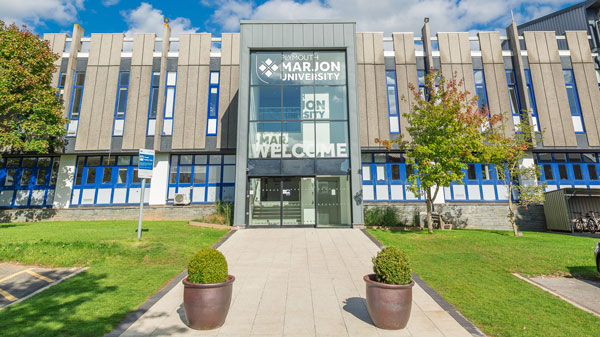University of St Mark and St John
Find out how one university in Plymouth turned a challenge with lecture scheduling into an opportunity to improve teaching and learning for all their students.

Achievements
Increased Accessibility for Students with Disabilities
A “no-clicks” approach to Lecture Capture
Students Able to Balance Academic and Sporting Responsibilities
The Challenge
Adam Read, Senior e-Learning Technologist at the University of St Mark and St John (also known as Marjon), was contacted by two deans of faculty who presented him with a challenge. They had just been in discussions with the student union which had expressed concern that a number of scheduled lectures clashed with important sporting events.
Marjon has one of the most comprehensive programs of sports participation, performance, education, and research in the UK and is renowned for its world-class facilities. With the university eager to promote participation in sporting activities as part of the wider student experience, it was important to find a resolution to the lecture scheduling issue that would suit the needs of both academics and students.
The Solution
The idea of implementing campus-wide lecture capture was put forward as a possible solution, allowing students to catch up on anything they might miss because of their sporting commitments. The first step was for Adam Read to create a detailed project specification, in close collaboration with the deans. This process identified two key requirements:
- Automation: Any system had to run with little-to-no intervention from academic staff.
- Integration: The lecture capture system should work seamlessly with the university’s Virtual Learning Environment (VLE) – Moodle.
These requirements were then used to identify possible solutions. During this evaluation process, Adam actively sought feedback from other universities that had already implemented lecture capture – particularly from the University of Essex, which records all of its lectures across the entire university. Following this initial discovery phase, the university identified Panopto as the system that could meet its needs.
Marjon began a pilot with Panopto by setting up equipment in a heavily used lecture room and asking academics to try the solution out. For most staff, a key part of Panopto’s appeal was that their lectures could be automatically recorded and then made available to students in the familiar VLE setting within an hour or so – all without any additional work. With this no-clicks approach, it is much easier to get academic staff to buy in.
“Essentially, Panopto is running itself,” says Read, “So from a technical point of view it requires very little support once you can get it set up.”
“Essentially, Panopto is running itself, so from a technical point of view it requires very little support once you can get it set up.”
Adam Read, Senior e-Learning Technologist – University of St Mark and St John
The Impact
The benefits the university has seen reach far beyond solving the institution’s initial challenge around students missing lectures because of sporting events. As well as giving all students a chance to review learning materials as many times as they need to, university staff members think that it will be particularly useful for students with learning difficulties, such as dyslexia.
Following the success of the pilot project, Adam and his team are in the process of rolling Panopto out across a further 17 classrooms. Marjon also wants to make Panopto available on all staff machines, allowing instructors to record educational materials whenever, wherever.






